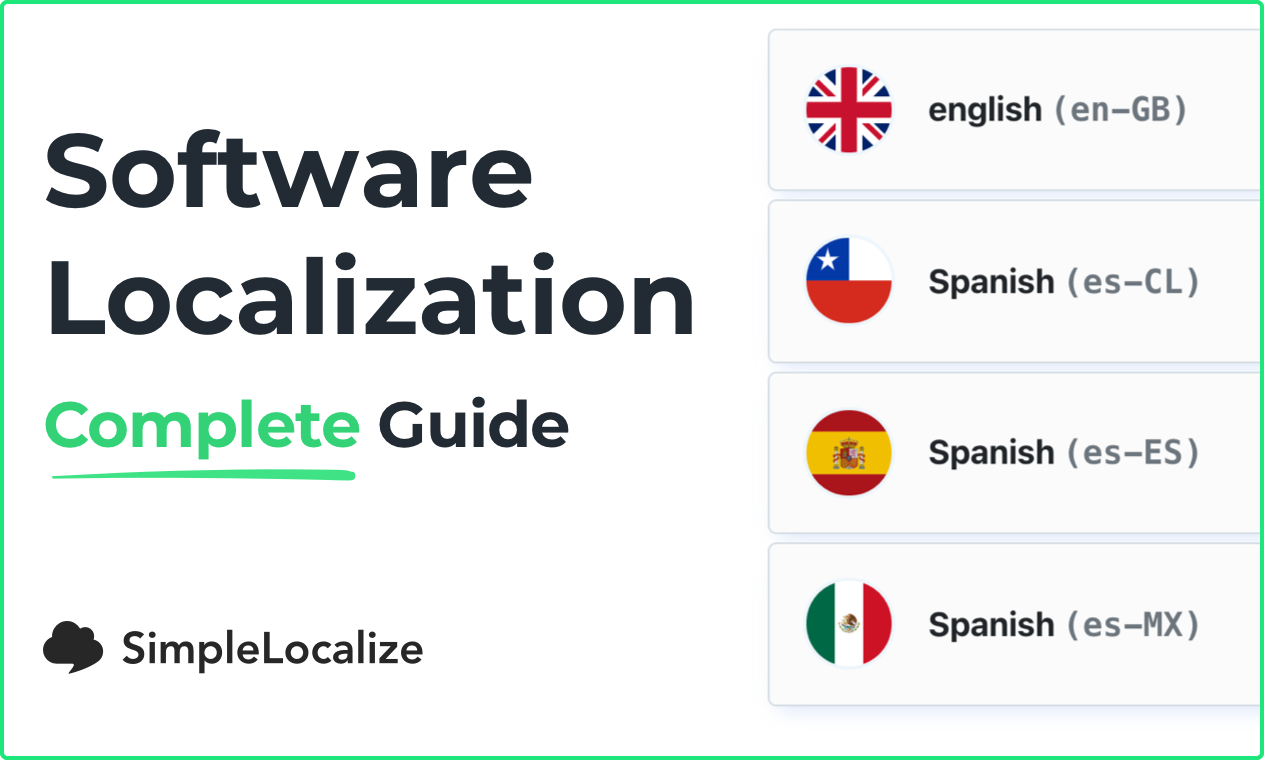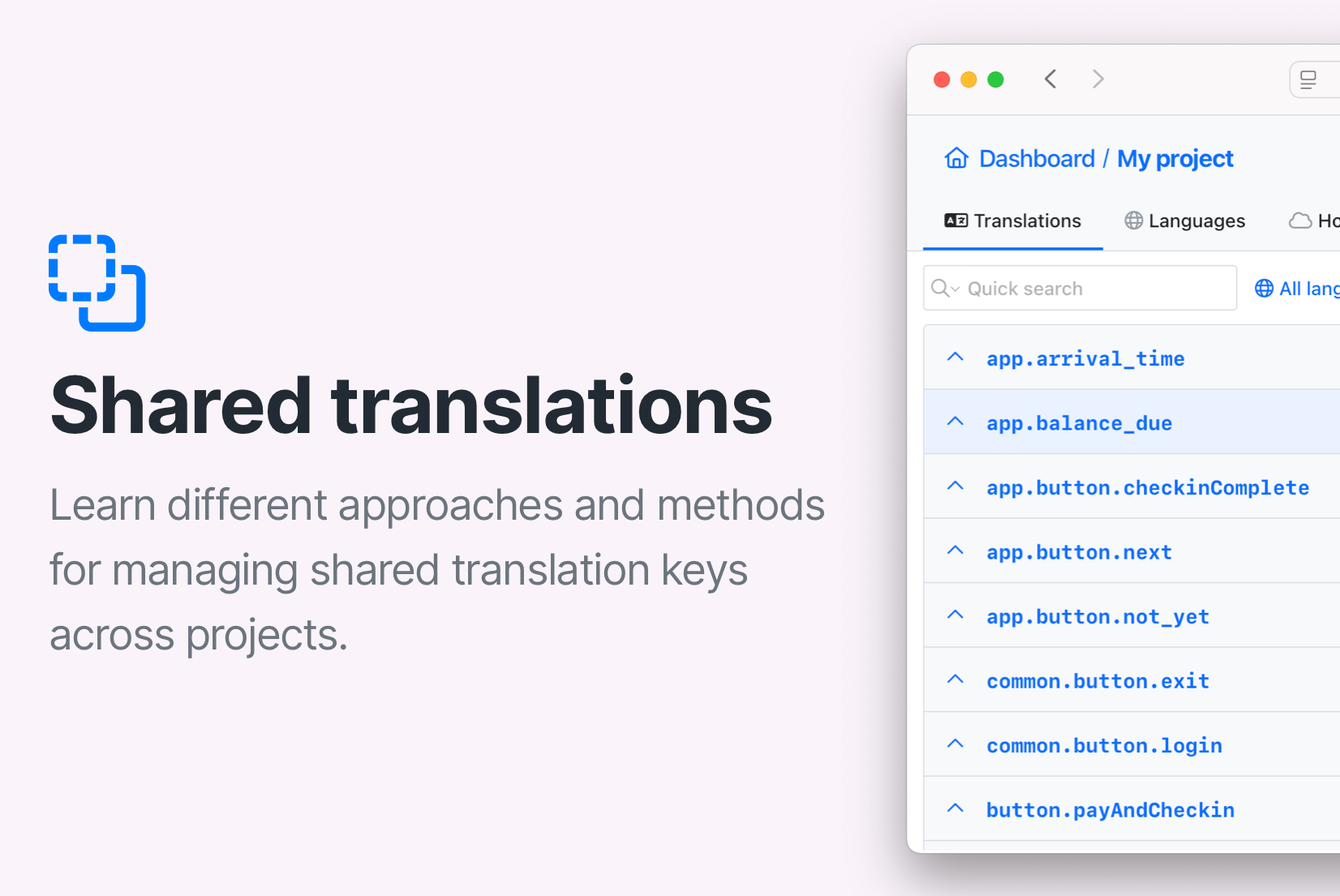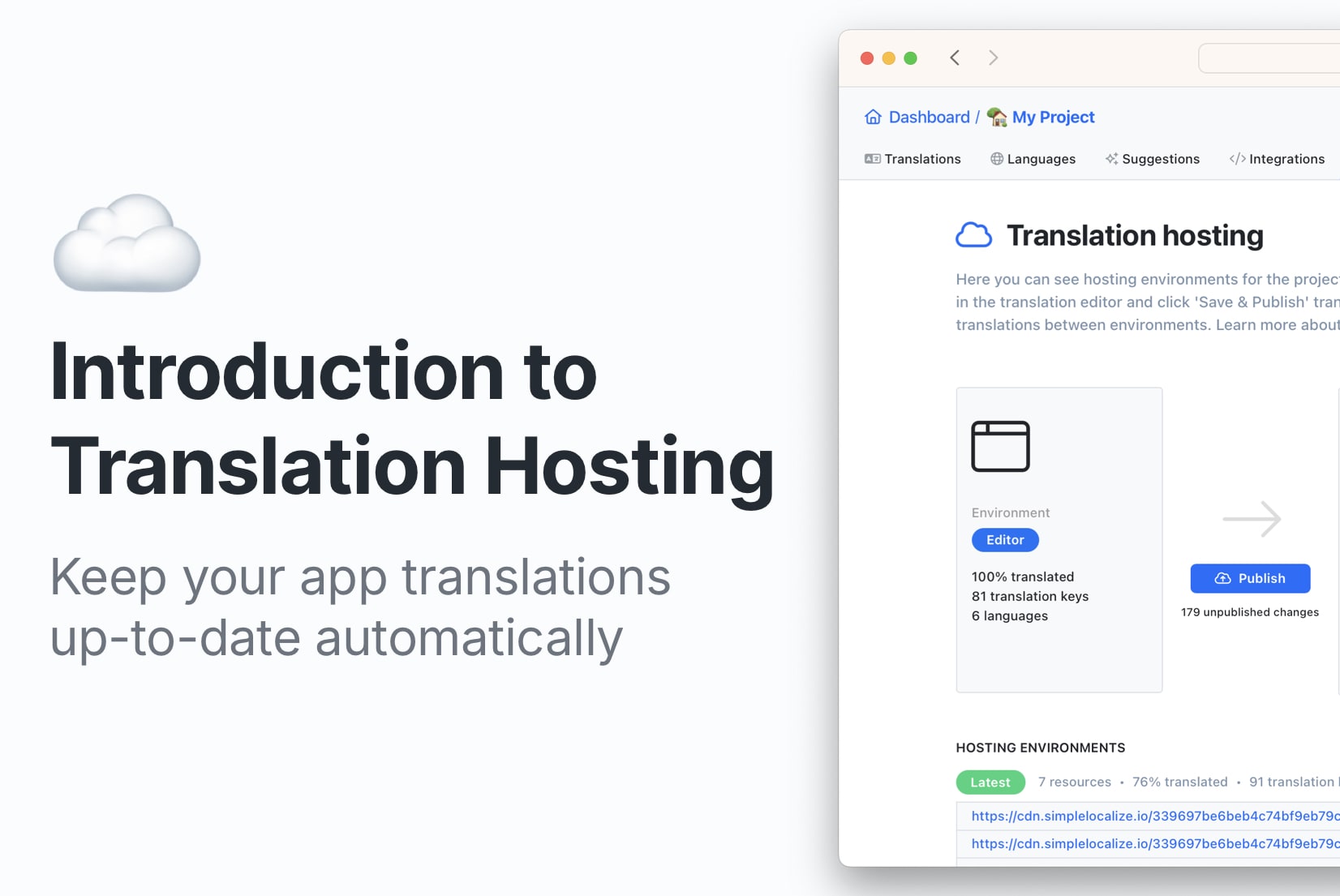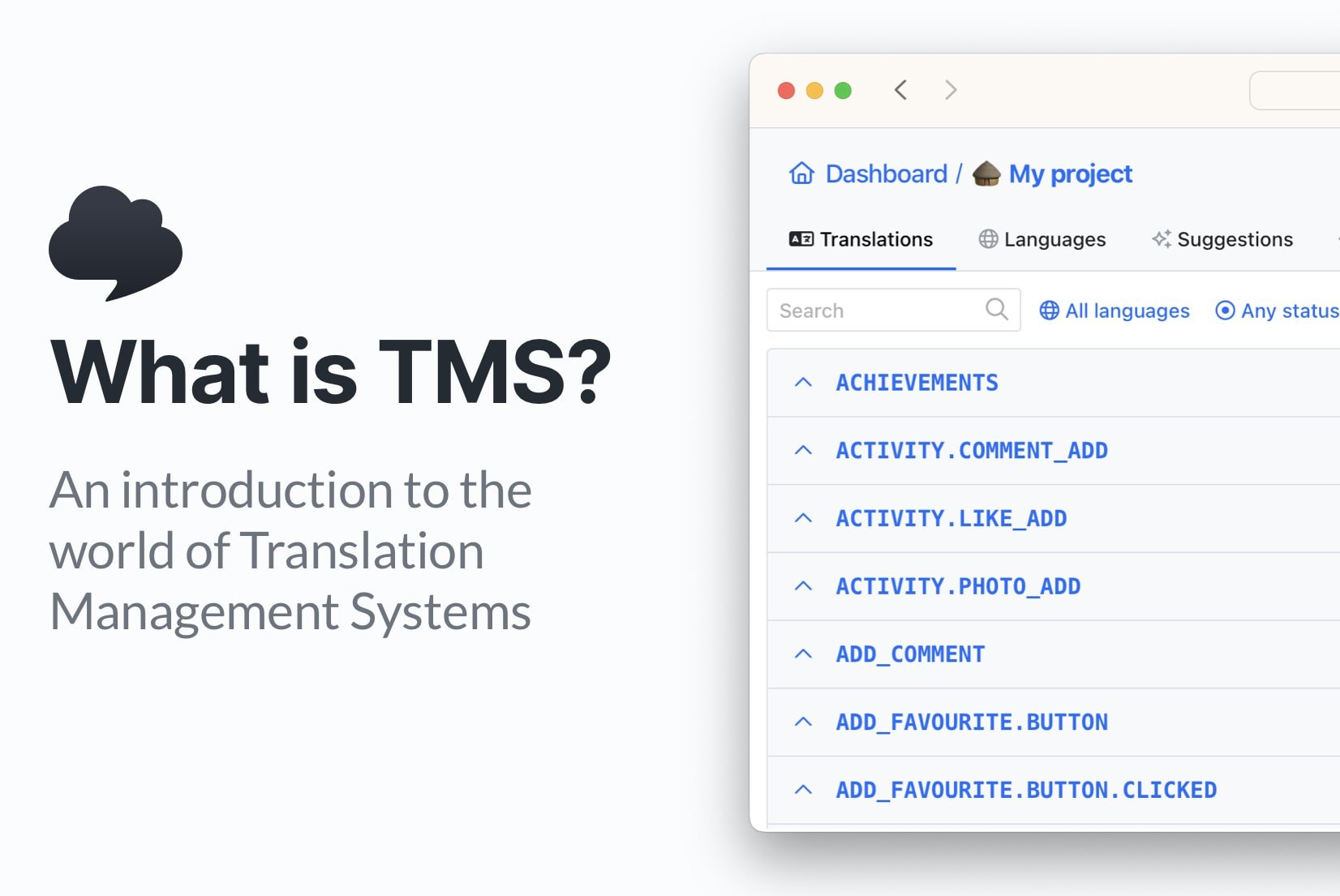The Complete Guide to Software Localization

Learn what is software localization and how to localize your website or app efficiently with SimpleLocalize translation management help.
What is Software Localization
Software Localization is a process of adjusting a website, app or any type of digital content to the recipient's language, region, and culture. It consists on adapting content to different cultures, by adjusting its translations, design and UX to make the software look and feel like it's tailored to the target user, their language, culture and habits. What is the goal of such changes? The product must feel as much natural for the end user as possible.
For the end user or recipient, localized content feels:
- very natural
- intelligible
- clear and easy to use
- shows that you care about your clients, respect their culture
Software localization often comes up when we want to expand our business, enter to new markets and gain new clients from all over the world. First thing we usually do is adding more languages and simply translating the website and app. But, software localization is much more than translating your product. It focuses on improving the user experience by tailoring content to the user so that they feel like the product was created for them.
Software localization involves many aspects of adjusting the software, from development, through well-thought translations, to design and marketing. The process requires attention to details and full understanding of the recipient's culture and thinking. All content must be fully comprehensible to the recipient, natural in the reception of the communicated information.
Localization is closely related with UX, as user experience is a major factor in the process of software internalization. We localize content to improve this experience, to strengthen the relationship with the user and his/her experience of the content and of use of our website or application. We create, develop software with the user's experience in mind, how they will use our product, whether it will be understandable, simple and natural for them to use.
Differences between localization and translation
Translation is a process of changing the words of one language to another language, when keeping the same meaning of the translated text. The goal is to translate the text from the original, so it is perfectly reproduced and understandable in the target language.
Localization is a process of adapting texts and other type of content to the recipient's culture. The process is more complex than translation, as it focuses on many factors, not only translating text. Here, the most important thing is to make this text feel natural and fully understandable for the recipient.
What are the main differences:
- Localization care for more than translating texts, it can also affect images, sounds, numbers, and everything that the recipient receives from your product, in all its aspects.
- Localization process in more complex, and it can involve different teams, not only translators, but also developers, designers, and marketers.
- Localization includes translation as a major part of the process, and it elevates translation to a higher level. It focuses more or regional language characteristics than simple translation from one language to another.
Localization related terms and acronyms
Localization process is getting more and more recognition, and you can find it and other terms related to it in different forms. See the list of terms that are good to know when localizing your product.
- l10n (localization) — process of adjusting a website or app to user language, culture, and location (region).
- t9n (translation) - process of transferring words and phrases from one language to another with the best possible representation of the original meaning of the text.
- i18n (internationalization) – adapting software to different languages, making it international, by considering regional and technical requirements of the target language.
- g11n (globalization) – process in which a business starts to operate on an international scale. It consists of internationalization, translation, and localization.
- xl8 – group of translation management systems.
- m17n (multilingualization) – adapting or localizing website or app into multiple languages.
- locale – determines the user's language, region and variables, dialect of language he uses, for example, in ES-es and ES-cl,
esandclare locales that indicate specific language region (Spain and Chile). - TMS — translation management system - it helps in managing translations software projects.
- MT - machine translation - the use of software to automatically translate text or speech from one language to another.
- TM - translation memory - a database that stores previously translated words, sentences, paragraphs or segments, for the future use by translators.
- CAT - computer-aided translation, or machine-assisted translation, is the use of software to assist a human translator in the translation process.
- SL/TL - source language/target language - source language is the language that is to be translated to another language. Target language is the language that receives the translated text.
- A11y - accessibility - the practice of making websites and applications usable by people with disabilities, ensuring that all users can access and interact with the content.
Why is localization so important?
Localization process is significant for both the company, as it helps it grow and expand to other markets, and to end users, by improving their experience with localized product. A localized website or app, brings many important benefits:
- improves customer satisfaction because users can use product which is fully understandable for them, clear and adjusted to their local language and specifics.
- shows your customers that you care for them and their culture.
- improves customer experience and overall satisfaction
- helps increase customers base and expand your business to international markets.
- it is an opposite to universal content (one for everyone), and focuses on individual reception of the software.
- helps to develop cultural awareness in the world, builds a sense of integrity, as well as understanding and respect for other cultures.
- creates a connection between localized product and its users, as they can feel so natural and welcome when using it.
- improves SEO by boosting website traffic and making it stand out from the competition.
How to get started with software localization
It is always a good moment to start with software localization or improve it, but the sooner you take care of it, the sooner you will see results and the easier the process will be.
Foremost, really think about the countries and audiences for which you want to adapt your product. Do your research, find out how their language and culture differs from yours, if there are regionalisms, dialects. Check how websites or services similar to yours look like and work in that country or language. Think about what you need to adjust in your application to make it seem like it was created for the target user.
Translation
This is usually the first step in getting started with software localization. Decide on languages or countries you would like to expand on, and add those languages to your website or app.
- do research of different tools and translation libraries you can use to translate your product. It is important on developers side to prepare the translations structure in the code's side.
- hire professional translators or auto-translate all texts with DeepL or Google Translate. Note that it is easier, but may require revision, editing and proofreading. Think of how you will handle all changes in your software, how you will manage translations of new features.
- think of using a translation management system, it will help you automatize the process of translation and localization and deliver product faster for specific locations.
- remember that often texts in English are shorter than those in other languages, like Spanish or German. Make sure the translated content will look good and fit perfectly in your website or app.
- create a glossary to make sure all terms are consistently translated and used in the same way throughout the application. You can share it with your team and translators to keep all important terms, like proper names used in your product, in one place.
Localization
When expanding to other markets, make sure that not only the translated content, but also images, are adjusted for the specific user location. If you enter a market in Argentina or Venezuela, remember that language (locale) and culture are different from Spain or Mexico, despite a common language.
What areas of your product to consider in localization?
- Numbers – number formatting is different for different countries and regions. E.g., the use of
.and,in a number, its placement as grouping character or decimal character is different in different countries. Make sure you set number formatting correctly, and you can do that with JavaScript. - Dates and time – date and time formats differ in different parts of the words. In Poland, we will use dd.mm.yyyy, and HH:mm (in 24-hour notation), but in the USA, you go with MM/DD/YY and h:mm (in 12-hour notation). Date 12.10.2012 can be read differently by different people.
- Currency and prices – in some currencies, like USD, you put the currency symbol before the number, like $499. In Spain, the symbol goes after the number, so you will see the price 299 €, not €299. Look at the prices too, for example, price $ 10,234.56 won't work for Chile as the currency (CLP) does not have decimals.
- Images and Icons – make sure the images you add to your website have the same meaning for different culture, or adjust them to march better your recipients. Note that in some cases, you will need to localize images as well to adjust the content for your users.
- UX and UI– remember that different cultures have different likening in regard of what is considered a good-looking, appealing and interesting. Make sure that your product, and its design, is appealing to the specific market.
Localization tips and tricks
We have created a list of tips and tricks that can help you start and improve localization of your content. Make sure you check the blog posts below!
- i18n tips and tricks – check most common problems in localization process and avoid them thanks to those tricks.
- SimpleLocalize tips and tricks – our tips and trics for easier translation management in SimpleLocalize.
- How to handle localization process efficiently – this blog post is a must-read read for getting started with localization, explaining how to manage the process without making common mistakes.
- Best practices in software localization – learn how to localize your website or app efficiently, with best practices in mind.
What is localization software
Localization software is a system that helps you to manage your languages and translations efficiently. It offers a set of tools that automatize the process, like auto-translation, and improve the development process and changes management. It creates a workflow for development, translators and managers team to control and manage translation process in one place.
What features a localization and translation management software can offer?
- helps automatize the process of translation and localization and deliver product faster for specific locations
- control of the whole translation and localization progress in one app
- all translation changes can be deployed and updated immediately to development or production environment
- workflow optimization
- helps keep track of all changes in translations by showing previous versions and keeping the backup of all data
- gives you an option to translate your website for multiple languages with a few clicks
- different access levels for managers and translators
- supports various localization and translation libraries and file formats
As the localization process and be tricky and involves different teams, a localization software like SimpleLocalize can improve it significantly. It's clean, user-friendly and simple system for handing i18n, which can be integrated with many popular translation libraries, like i18next, next-translate, FormatJS, iOS, Android and more. A great translation editor will improve the translation process and help to control all changes.
Sign in now to SimpleLocalize and test it for your product. You are welcome to contact us with any doubts or questions at contact@simplelocalize.io
Conclusions about localization
Localization is about reaching out to the user and tailoring content to them. This process in a way supports local communities, delights in their linguistic and cultural differences, and draws attention to the importance of these differences. Software localization is certainly a big challenge, but it is definitely worth it to build a real and valuable relationship between the service provider or software developer and its user.




